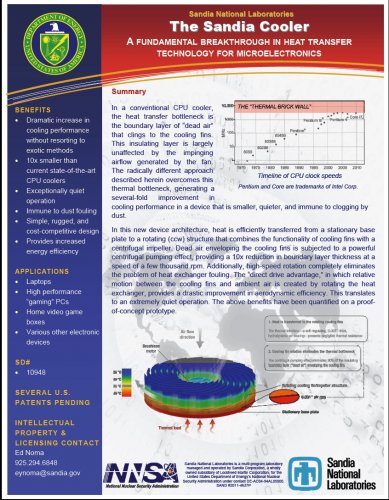dannydale
ACCESS: Top Secret
- Joined
- 13 May 2007
- Messages
- 545
- Reaction score
- 410
Youtube
Sandia.gov press release
I for one can't wait for moar spinny bits in my computer, especially if I can keep my cpu and gpu cooler! B)
Sandia.gov press release
I for one can't wait for moar spinny bits in my computer, especially if I can keep my cpu and gpu cooler! B)

